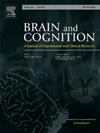Patterns of cortical thickness in MCI patients with and without semantic impairment
IF 1.4
3区 心理学
Q3 NEUROSCIENCES
引用次数: 0
Abstract
Background
About half of MCI patients experience semantic deficits, which may predict progression to Alzheimer’s disease (AD). The neural basis of these deficits in MCI is not well understood. This study aimed to examine the relationship between semantic memory performance and cortical thickness in MCI patients.
Methods
Using FreeSurfer, T1-weighted MRI scans were analyzed from MCI patients with (MCIsem+) and without (MCIsem-) semantic deficits. Correlation analyses across all participants, including healthy controls, examined the link between semantic memory and cortical thickness, controlling for age and education. Group comparisons of cortical thickness were also conducted between MCIsem+ and MCIsem- groups.
Results
Significant correlations emerged between semantic memory performance and cortical thickness in the left medial temporal lobe, right temporal pole, and bilateral frontal regions—areas involved in central semantic and executive processes. Additionally, MCIsem + patients showed reduced cortical thickness in frontal, parietal, and occipital areas compared to MCIsem- patients.
Conclusion
Semantic memory performance in MCI patients is associated with structural differences in regions supporting both central and executive aspects of semantic processing. Given that MCIsem + patients may face higher risk of AD progression, longitudinal studies should investigate these cortical markers’ predictive value.
有语义障碍和无语义障碍的 MCI 患者的皮层厚度模式。
背景:大约一半的MCI患者经历语义缺陷,这可能预示着阿尔茨海默病(AD)的进展。MCI中这些缺陷的神经基础尚不清楚。本研究旨在探讨轻度认知损伤患者语义记忆表现与皮层厚度的关系。方法:使用FreeSurfer,分析具有(MCIsem+)和不具有(MCIsem-)语义缺陷的MCI患者的t1加权MRI扫描。对包括健康对照组在内的所有参与者进行相关性分析,考察了语义记忆和皮层厚度之间的联系,控制了年龄和教育程度。在MCIsem+组和MCIsem-组之间进行皮质厚度的组间比较。结果:语义记忆表现与左内侧颞叶、右颞极和双侧额叶皮层厚度呈显著相关,这些区域涉及中央语义和执行过程。此外,与MCIsem-患者相比,MCIsem +患者的额、顶叶和枕叶皮质厚度减少。结论:MCI患者的语义记忆表现与支持语义加工的中央和执行方面的区域结构差异有关。鉴于MCIsem +患者可能面临更高的AD进展风险,纵向研究应该调查这些皮质标志物的预测价值。
本文章由计算机程序翻译,如有差异,请以英文原文为准。
求助全文
约1分钟内获得全文
求助全文
来源期刊

Brain and Cognition
医学-神经科学
CiteScore
4.60
自引率
0.00%
发文量
46
审稿时长
6 months
期刊介绍:
Brain and Cognition is a forum for the integration of the neurosciences and cognitive sciences. B&C publishes peer-reviewed research articles, theoretical papers, case histories that address important theoretical issues, and historical articles into the interaction between cognitive function and brain processes. The focus is on rigorous studies of an empirical or theoretical nature and which make an original contribution to our knowledge about the involvement of the nervous system in cognition. Coverage includes, but is not limited to memory, learning, emotion, perception, movement, music or praxis in relationship to brain structure or function. Published articles will typically address issues relating some aspect of cognitive function to its neurological substrates with clear theoretical import, formulating new hypotheses or refuting previously established hypotheses. Clinical papers are welcome if they raise issues of theoretical importance or concern and shed light on the interaction between brain function and cognitive function. We welcome review articles that clearly contribute a new perspective or integration, beyond summarizing the literature in the field; authors of review articles should make explicit where the contribution lies. We also welcome proposals for special issues on aspects of the relation between cognition and the structure and function of the nervous system. Such proposals can be made directly to the Editor-in-Chief from individuals interested in being guest editors for such collections.
 求助内容:
求助内容: 应助结果提醒方式:
应助结果提醒方式:


